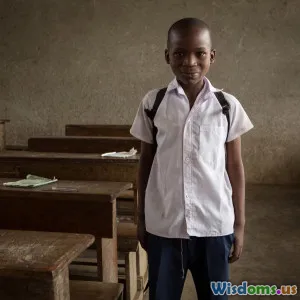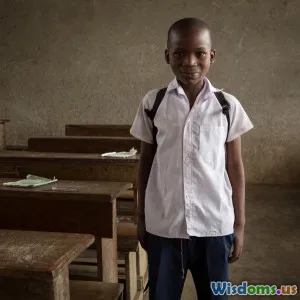
Five Surprising Countries Embracing NonTraditional Education Models
8 min read Explore five unexpected countries redefining education through innovative, nontraditional learning models transforming student engagement worldwide. (0 Reviews)
Five Surprising Countries Embracing Nontraditional Education Models
Education, traditionally tethered to classrooms, textbooks, and rigid curriculums, is undergoing an impressive transformation worldwide. While some countries stick to age-old paradigms, a handful have surprised the global community by pioneering nontraditional education models. These models don’t just impart knowledge; they redefine how, why, and where learning happens — often blurring the lines between formal education and real-world experiences.
Introduction: Breaking Boundaries in Education
The 21st century has ushered in new ways to think about education, challenged by technological breakthroughs, social changes, and shifting global workforce demands. Interestingly, some nations, not typically spotlighted for their educational systems, have embraced unconventional approaches that foster creativity, autonomy, and inclusiveness.
This article shines a light on five surprising countries embracing innovative educational models that challenge traditional norms. Each brings unique perspectives and methods offering valuable lessons for educators, policymakers, and learners globally.
1. Finland: The Pioneer of Play and Autonomy
Education Philosophy
Often hailed as the gold standard of education, Finland surprises many not just with performance metrics but with its unconventional approach. Their model prioritizes child development over rote learning—emphasizing play, creativity, and student well-being.
Forest Schools and Learning Outside Walls
One striking element is the rise of ‘forest schools’, where children learn in natural environments for significant parts of the day. Studies in Finland reveal that children exposed to outdoor learning bolster their problem-solving skills, emotional resilience, and social cooperation.
Real-World Impact
According to the Finnish National Agency for Education, this nontraditional model decreases stress and increases intrinsic motivation, directly contributing to Finland consistently ranking high in the OECD’s Programme for International Student Assessment (PISA).
"Finnish education is less about sitting quietly and memorizing facts, and more about developing lifelong skills through exploration," says Pasi Sahlberg, Finnish educator and author.
2. South Korea: Harnessing Technology for Personalized Learning
Beyond Exam-Driven Systems
South Korea, often associated with intense exam culture, is paradoxically pushing innovative educational models through technology to reduce pressure and foster individualized learning.
AI and Virtual Reality in Classrooms
At the forefront are government-supported initiatives incorporating Artificial Intelligence (AI), Virtual Reality (VR), and personalized platforms. Schools deploy AI tutors analyzing each student’s strengths and gaps, crafting curricula tailored to unique needs.
The Effects
Early data from the Korean Ministry of Education shows improved engagement and better learning outcomes, especially in rural regions where access to quality teachers is limited. Personalized digital modules allow learners to progress at their own pace, reducing dropout rates.
"Technology should free students from one-size-fits-all education, helping them discover unique potentials," states Dr. Minjeong Kim, education tech researcher.
3. Bhutan: Integrating Happiness into Curriculum
Gross National Happiness and Education
Bhutan, famous for prioritizing Gross National Happiness (GNH) over GDP, adapts this philosophy into education. The Bhutanese curriculum includes emotional well-being and holistic development, rather than focusing exclusively on academics.
Mindfulness and Environmental Stewardship
Students engage daily in mindfulness exercises and community projects fostering environmental care, civic responsibility, and interpersonal empathy. These nontraditional practices elevate emotional intelligence and social cohesion.
ASEAN Recognition
In 2019, ASEAN acknowledged Bhutan’s efforts with a special commendation for integrating cultural values and happiness into education, inspiring other developing countries.
"We educate not just for knowledge but to nurture kind-hearted, balanced individuals," remarks a Bhutanese Ministry of Education official.
4. Estonia: Digital Nation Redefining Learning Spaces
From Tiny Baltic State to Digital Leader
Estonia’s rise as an advanced digital society extends into education. The country emphasizes tech literacy early, with Estonia becoming one of the first to provide 1:1 digital devices to students across all grades.
Project-Based and Collaborative Learning
Notably, their curriculum incorporates collaborative projects linked to real-life community challenges rather than isolated textbook tasks. Students design apps, solve local environmental issues, and engage entrepreneurs as mentors.
Results and Replicability
According to Estonian officials, this synergy between technology and community involvement creates confident, capable citizens ready for rapidly shifting job markets. Estonia frequently appears near the top in the EU’s PISA reports on computer science and innovative teaching.
As Tiit Land, former Estonian Minister of Education, pointed out, "Digital tools motivate children, turning learning into an adventure rather than a chore."
5. Senegal: Embracing Multilingual, Culturally Relevant Learning
Education Challenges and Opportunities
In West Africa, Senegal grapples with literacy gaps and uneven resource distribution. Yet, it advances a refreshing model focused on culturally responsive education incorporating native languages.
Mother Tongue Instruction and Community Inclusion
Policy shifts prioritize mother tongue instruction in early years followed by gradual introduction of French, the official language. Schools collaborate closely with families and traditional leaders to co-create curricula reflecting local heritage and practical skills.
Greater Engagement and Equity
This approach improves comprehension, participation, and retention rates substantially. UNESCO reports indicate that children in mother tongue programs have a 30% higher chance of continuing to secondary education.
Fatou Ndiaye, educational coordinator in Dakar, stresses, "Children feel respected and understood when taught in their languages, sparking a genuine love for learning."
Conclusion: Lessons from Global Innovators
From Northern Europe’s forests to West Africa’s multilingual classrooms, these five countries exemplify how breaking away from conventional schooling norms can better serve diverse learners’ needs. Finland’s gentler, nature-centered methods contrast South Korea’s cutting-edge technology focus. Bhutan’s happiness-driven education offers an alternative metric of success. Estonia harnesses digital and civic tools, while Senegal honors cultural roots to enhance inclusion.
Their shared success mirrors a global shift: education is evolving beyond rigid traditions to embrace creativity, individuality, and community. For educators, policymakers, and advocates worldwide, these models are living proof that innovation is not only possible but essential to nurture well-rounded, capable learners prepared for a complex future.
Engaging with or adapting these approaches can inspire transformative change — helping education systems move beyond the past to embrace a more flexible, personalized, and humane vision for learning.
Rate the Post
User Reviews
Popular Posts

















